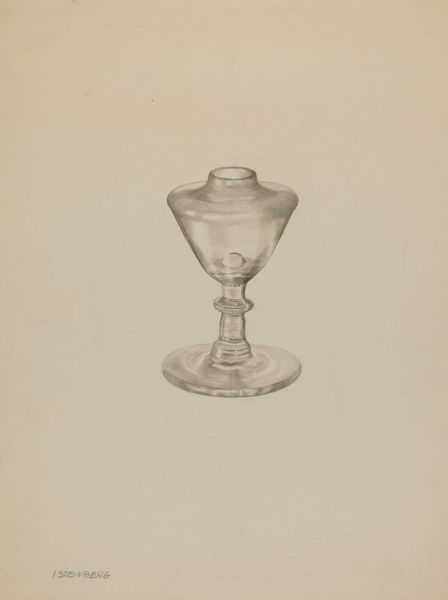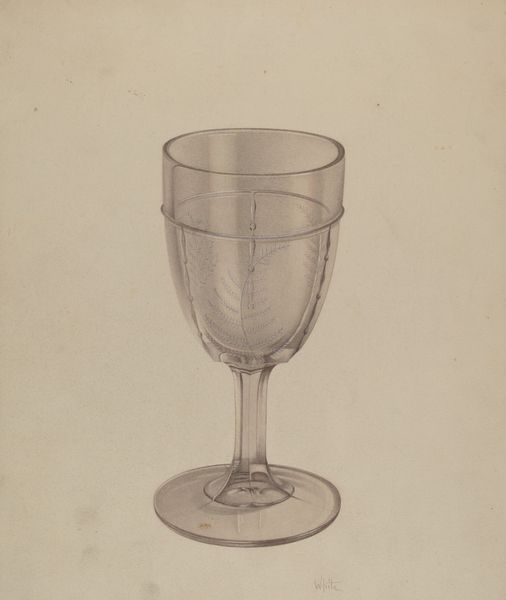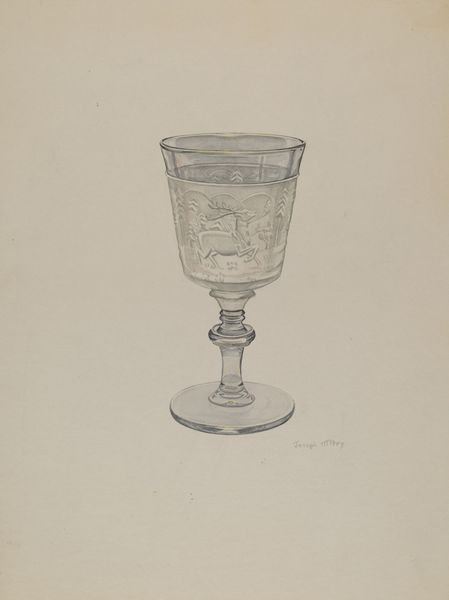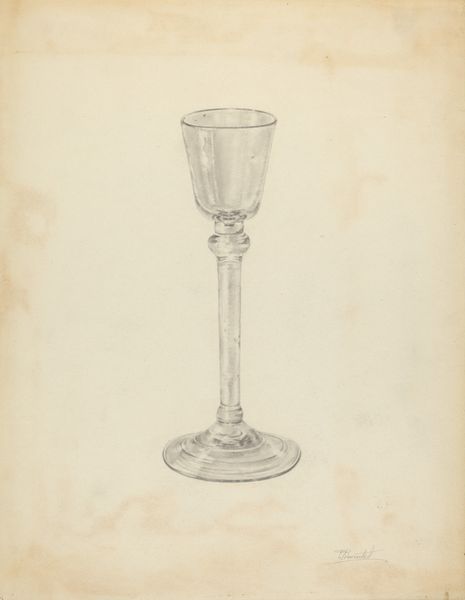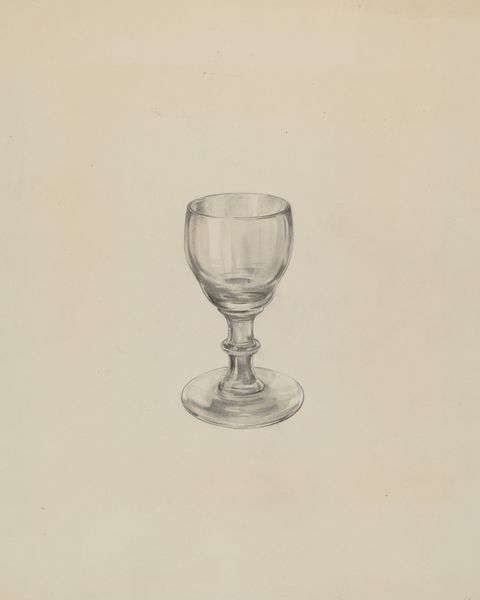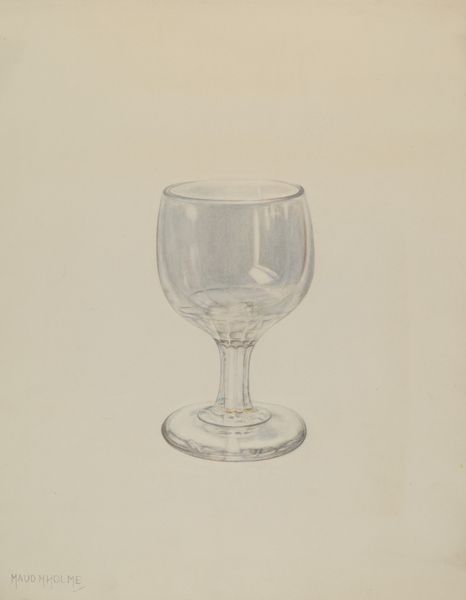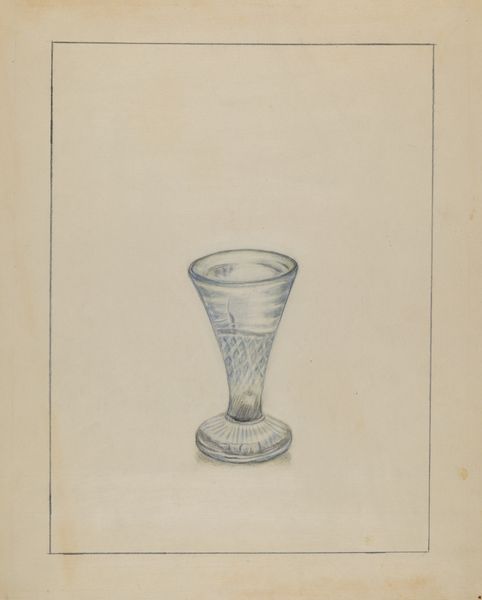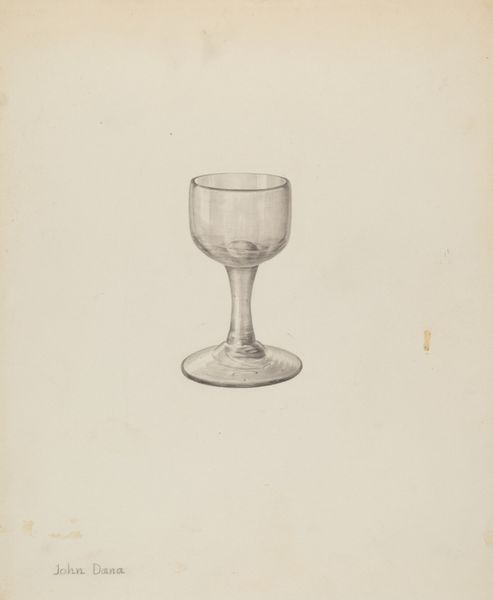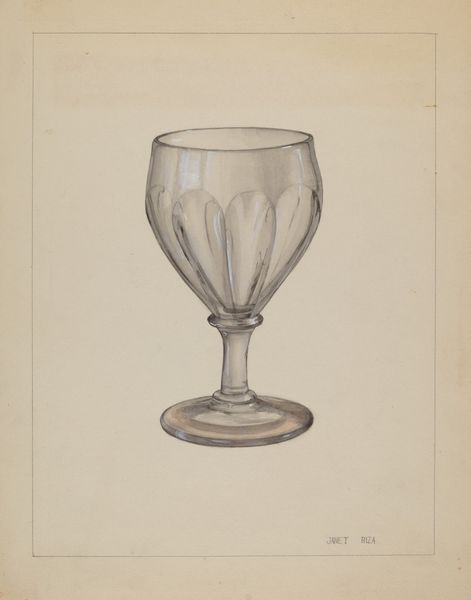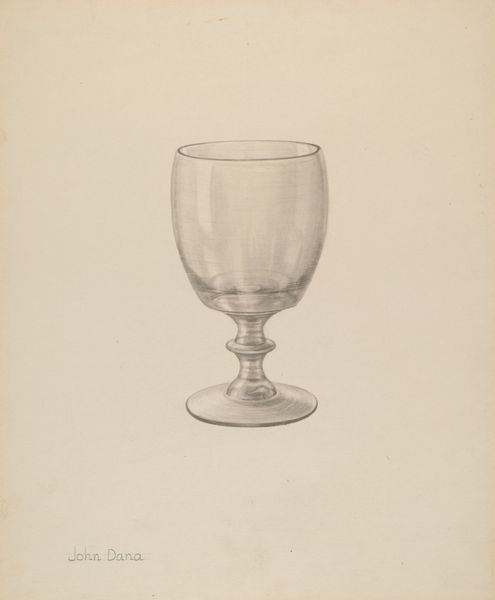
drawing, pencil
#
drawing
#
pencil drawing
#
geometric
#
pencil
Dimensions: overall: 32.2 x 26 cm (12 11/16 x 10 1/4 in.)
Copyright: National Gallery of Art: CC0 1.0
Curator: Lillian Causey rendered this artwork, named "Glass," around 1936. She worked with pencil and created a simple, straightforward, seemingly ordinary drawing. Editor: It has a melancholic feel to it, don't you think? The starkness against the blank space and that simple gray-scale shading... like a forgotten artifact of some solitary ceremony. Curator: Causey lived and worked during a time when American artists were really considering the “everyday” subject, imbuing it with fresh perspectives. Perhaps a sort of meditation on the quiet dignity of domesticity in pre-war America? We often project what we know and feel back on the past. Editor: And it’s the “glass” itself. The object's form evokes a sense of ceremony. But then it's also completely empty, devoid of the liquid that might define it. Its symbolism has been upended by what is not present, so what cultural function does that serve? Curator: Empty vessels can be powerfully suggestive, symbolically, evoking yearning and hope as equally valid ideas. Is there space to fill the form, literally or figuratively? The pencil strokes delicately trace the structure as it seems more geometric, an ordered architecture containing limitless potential. Editor: That is so interesting. You're looking at the container and I am focused on that which is *not* contained. If Causey wanted to reveal culture she picked an indirect mode of speaking through imagery, as we are now left questioning why depict what we are familiar with if it serves no grand purpose, like say, historical portraiture. Curator: Perhaps Causey prompts our minds to question value; a straightforward, practical cup is elevated through artistic observation to evoke cultural thought. Editor: I see now, perhaps its social value lies precisely in its subtle, almost ethereal form of quiet questioning. Curator: Right. Consider the simplicity of the form. How deceptively intricate it really is, with all those facets to catch the light and cast shadows. Editor: That kind of meditative quality must be recognized. The very process of looking closely, translating onto paper, really becomes the cultural function itself. Curator: Exactly. By studying one form, we can decode so many cultural facets and psychological dimensions that speak to what makes us human.
Comments
No comments
Be the first to comment and join the conversation on the ultimate creative platform.
